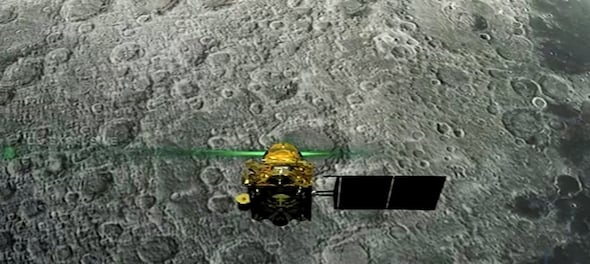
India is all set to achieve another milestone in its lunar mission. The historic landing of Chandrayaan-3 on the Moon's surface is scheduled for August 23. The powered descent is set to take place around 5.45 pm IST, with touchdown expected at approximately 6.05 pm IST, according to Indian Space Research Organisation (ISRO).
As anticipation builds up for this epochal event, it is worth reflecting on the findings of ISRO's previous lunar missions, Chandrayaan-1 and Chandrayaan-2.
Chandrayaan-1
Launched on October 22, 2008, Chandrayaan-1 marked India's first foray into lunar exploration. Despite its premature conclusion, the mission paved the way for future lunar exploration missions of ISRO. Orbiting the Moon at an altitude of 100 km, the spacecraft carried 11 scientific payloads developed in India, the United States, United Kingdom, Germany, Sweden and Bulgaria.
Key findings of Chandrayaan-1
Confirmation of water molecules on the lunar surface, particularly in the polar regions. This revelation challenged prevailing notions of the Moon's arid nature, opening doors to future human habitation and resource utilisation.
Mapping and identification of minerals such as magnesium, aluminium, calcium, and iron, thus providing invaluable insights into lunar geology and composition.
High-resolution images of the Moon's topography, aiding the identification of potential landing sites for upcoming missions.
ISRO’s international collaborations with esteemed space agencies like NASA, ESA and the Bulgarian Academy of Sciences also helps to shape future lunar missions.
Chandrayaan-2
After Chandrayaan-1, ISRO launched Chandrayaan-2 in 2019. The mission aimed to build upon its predecessor's accomplishments. The spacecraft entered lunar orbit on August 20, 2019, with the Vikram lander and rover scheduled to land near the Moon's south pole on September 6, 2019.
However, the mission encountered a setback as the Vikram lander crashed during its descent. Investigation revealed a software glitch as the cause of the crash. Despite the lander's unfortunate outcome, the orbiter component of Chandrayaan-2 remains operational and has since made noteworthy contributions.
Key findings of Chandrayaan-2
According to 2022 publications in the Astrophysical Journal Letters, ISRO researchers and scientists reported that the orbiter detected and mapped an abundance of sodium on the Moon's surface. Using the large area X-ray spectrometer, CLASS, researchers at ISRO observed the presence of two types of sodium atoms — those loosely bound to the surface and those within minerals. The influence of solar radiation liberates loosely-bound sodium atoms, contributing to the Moon's exosphere.
This discovery holds significant implications, offering insights into surface-exosphere interactions not only on the Moon but potentially on other celestial bodies as well.



